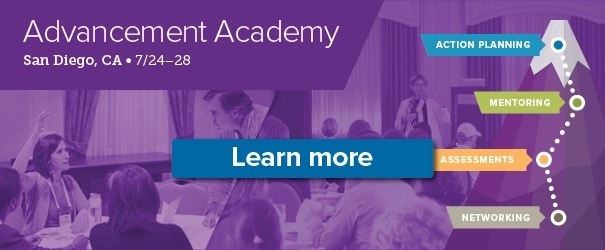Facebook is the go-to social media outlet for sharing your messages, offers, and events with your community. The once free social giant has changed its algorithm several times over the years, making communications more challenging for companies and losing some of its support along the way. However, it remains at the top of the pyramid for social advertising strategies, so we are forced to reignite our love for its capabilities.
The days of posting your school’s messages, bulletins, events, multimedia, and shared interests without a plan are gone. Now, to maximize efforts on Facebook, not only do we need to invest in our communications, we need to have a well thought-out plan about what it is we’re sharing with our audience and community. For small communications departments and teams in schools, this can be overwhelming. It doesn’t have to be, though. Let’s take a look at how Facebook is currently configured.
The nitty-gritty
To be seen, your school’s messages need to show up in people’s newsfeeds. And then to maximize that exposure, you need people to engage and interact with your messages.
Let’s start with how to get your messages to appear in people’s newsfeeds.
There are several types of messages your school can share. Facebook has recently updated their dashboard for organizations. If you’re an administrator for your school’s page, then you’ve most likely seen the new icon options making it easier than ever to choose what sort of message you’d like to share. There are eight to choose from:
- share a photo or video;
- create an advertisement;
- craft a message geared to get phone calls;
- craft a message focused on engaging conversations;
- post a map to help people find your school;
- create an event such as an open house, championship game, or alumni gala;
- create an offer; or
- simply write a note.
Any one of these types of posts can then be “promoted.” Promoting a post exposes it to a wider circulation within your criteria. Meaning, you select the demographics and geographic area for impressions, e.g., men and women, 25-65, fans and friends of fans, within 100 miles of current location, or interested in education. Facebook then calculates an estimated cost for reaching your goal.
If you choose not to promote messages, only one to two percent of your followers will see your messages.
What’s worthy of promotion?
This is where strategy comes into the mix. Not every message you post needs a budget. Posts that are of particular interest to your followers—such as video clips of last night’s big game, graduation day photos, new stories reporting on the debate club’s win at nationals—organically attracts engagement. We call this buzz-worthy content.
Engagement is any time a follower likes, shares, or comments on your posts. The more people who interact with your messages, the more people Facebook will expose it to. This is the secret to “going viral.”
Buzz-worthy content needs less monetary support than messages inviting people to events, locating your campus, or asking people to participate in an offer. These messages, although interesting to some, are less likely to generate organic reach because they don’t appeal to the general public—they are more targeted, i.e., alumni, sports fans, donors, etc.. Yet, they are just as important.
This is where your Communications Team can really get creative. Events can be created on Facebook with a link directing interested attendees to a unique landing page, enticing viewers to register and offering more detailed information. From here, their interest in your event can be shared with their Facebook followers and friends, helping to generate additional momentum to your event. And, depending on how many social platforms your school maintains, messages can be tweeted, pinned, and posted leading back to your registration page—expanding your reach and building upon your paid efforts.
Planning tips
- It costs less money to advertise to fans than non-fans.
- Images help visually tell your story or illustrate your message. Include relevant graphics with your posts whenever applicable to boost interest.
- Search Facebook for other pages of interest to your followers. are interested in. By searching in the Facebook search option for “pages liked by people who like [name of your school]” you’ll see the most popular interests of your fans. Then, while setting up your advertisements and boosted posts, you can include those interests in your demographics.
- Average daily spend per advertisement is $50.
- Always have a strategy for following-up with those engaging with your events. This is especially important for efforts concerning donors and alumni.
Additional ISM resources of interest
The Source for Advancement Vol. 14 No. 7 Purposeful Social Media Plans
The Source for Business and Operations Vol. 6 No. 6 Social Media: The Often Overlooked Element In Your School’s Crisis Plan
The Source for Advancement Vol. 13 No. 7 Keeping Your Social Media Current
 hbspt.cta.load(2626348, '0deffb9c-8d71-4919-9bd5-b0c1a2c72746', {});
hbspt.cta.load(2626348, '0deffb9c-8d71-4919-9bd5-b0c1a2c72746', {}); 




